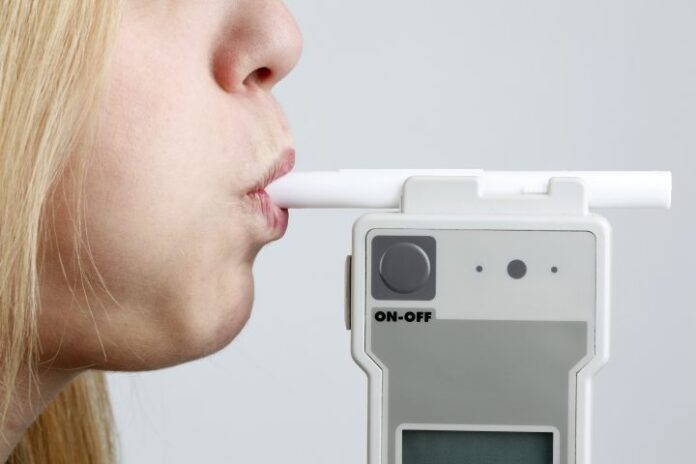A new COVID-19 screening tool promises to make testing easier, faster and painless, relying on the simple act of breathing.
The U.S. Food and Drug Administration (FDA) on Wednesday issued emergency use authorization for what it said is the first device that can detect COVID-19 in breath samples.
Health Canada told Global News on Friday it has not yet received an application for the test, but Canadian experts say this non-invasive tool could not only make testing easier but could reduce transmission rates in key settings.
“The biggest benefit of a breath test, if it’s not too expensive and it is sensitive enough, is that everybody breathes and you don’t have to learn a whole lot more to do it,” said Dr. Lisa Barrett, an infectious diseases physician and researcher at Dalhousie University.
“It’s a test that’s adding to an already pretty good set of tools. Turn-around time would be one of the big benefits for it,” she added.
The use of rapid antigen tests that can be purchased and performed at home have become increasingly common in Canada.
Vaccinated Canadians can have COVID-19 symptoms despite testing negative – Apr 8, 2022
With a sensitivity of 91 per cent, the breath test is more accurate than the rapid antigen test, said Dr. Raywat Deonandan, an epidemiologist and associate professor at the University of Ottawa.
“That’s pretty good. It’s better than the rapid antigen tests, which hover around 60 per cent these days. But it’s not ideal,” he told Global News.
The test may also be more comfortable since it does not require a cotton swab to be inserted in your mouth or nose — a prospect that discourages many to get tested, Deonandan said.
“So it’s not scary, there’s no disincentive for use based upon comfort.”
The InspectIR COVID-19 Breathalyzer was tested in a study of more than 2,400 individuals.
It is about the size of a piece of carry-on luggage, the FDA said, and can be used in doctor’s offices, hospitals and mobile testing sites.
The test must be carried out by a qualified operator under the supervision of a licensed health-care provider.
To collect the sample, a person exhales through their mouth, much like blowing up a balloon, into a tube or single-use straw connected to the testing kit.
Trending Stories
Should you rent or buy a home? Why that calculation might be changing
Elon Musk’s Twitter bid prompts company to adopt ‘poison pill’ defence
A quarter liter of exhaled air is collected as a viable sample, which generally takes about 10 seconds.
BC researchers developing breath test for COVID-19 – Mar 12, 2021
The breath sample is captured by the device and the chemistry from the captured breath is rapidly heated and ionized.
An algorithmic software analyzes the subject’s breath to look for specific chemistry associated with the active viral infection of COVID-19.
The whole process takes about three minutes, from sample collection, analysis, detection to reporting of the results, according to the company and FDA.
A green square on the information screen indicates a negative test result and red means the person is COVID-positive.
The FDA says that a positive test result should be confirmed with a molecular, or PCR, test.
Deonandan foresees the breath test being used as a point of care at day-care centres, schools and long-term care homes.
“You’re going to miss some people, obviously, but the number of people you catch will be much higher,” he said.
“And so I think it’ll have a profound effect on transmission rates in these key settings.”
Barrett said the test could be useful in a hospital setting, such as just outside an operating room, when a quick result is needed.
Despite the speed and convenience, there are some limitations with this form of screening, experts say.
“Breath tests are notoriously challenging in that they can be influenced by many different factors,” including when you last ate, said Barrett.
Read more:
COVID-19 rapid tests an imperfect and necessary tool in potential sixth wave, experts say
She considers the breath test to have a potential niche market for COVID-19 testing.
“One of the biggest silver linings to the pandemic, quite frankly, has been that people have gotten access to tools that let them self-determine and self-test. This is not that tool.”
The breath test only gives a yes or no answer, so it doesn’t necessarily allow to get details on the specific variants, which is needed to monitor where the virus is and how it’s changing.
“If this test has a resilience against change in the virus or new variants, meaning if it still picks up new variants, then it may actually be a test that’s useful if it’s rapid, and …it’s variant proof,” said Barret.
Are breathalyzers unsafe during the COVID-19 crisis? – Apr 7, 2020
What is also unclear is what level of training is required for a technician to operate the testing machine and how much it costs.
InspectIR told Global News it is not releasing its pricing model at this time.
The company expects to be able to produce approximately 100 instruments per week, which can each be used to evaluate approximately 160 samples per day, the FDA said.
“At this level of production, testing capacity using the InspectIR COVID-19 Breathalyzer is expected to increase by approximately 64,000 samples per month.”
— With files from Ross Lord and The Associated Press
© 2022 Global News, a division of Corus Entertainment Inc.



